 Learn all about the components that go into a security system and some of the new technology available to help protect your family and your home
Learn all about the components that go into a security system and some of the new technology available to help protect your family and your home
1A security system can seem intimidating at first but with the help of this short summary, you will learn that Viamtek systems are extremely straightforward and easy to use. |
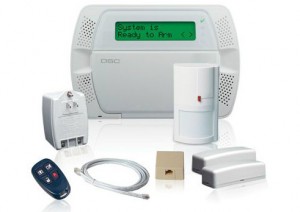 Click Here to enlarge picture Click Here to enlarge picture |
2Of course security systems help protect against intruders but did you know that the also help protect life and property hazards such as smoke, carbon monoxide, low temperature and flooding? They are truly SAFETY systems too. |
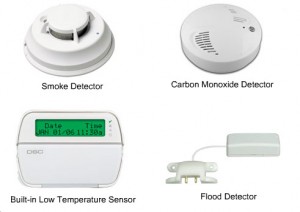 Click Here to enlarge picture Click Here to enlarge picture |
3There are many new options available to security system owners/users. In an older home it may be very difficult to run wires to the window and door sensors. Wireless security systems are a perfect option in this case. These products eliminate the need to run wires throughout a home while at the same time providing all the security features of a hardwired system. |
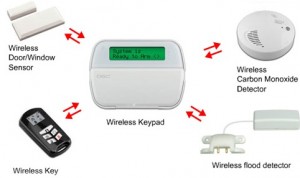 Click Here to enlarge picture Click Here to enlarge picture |
4In this overview we identify the components that go into a security system by categorizing the in five groups: Keypads and Control Devices, Perimeter Protection, Interior Protection, Environment Protection and Communication with a Monitoring Station. To simplify this tutorial, we will refer t a home or business as “the premises”.To illustrate, we will use the single storey floor plan of a home — illustrated to the right – to demonstrate where security system components can be located. |
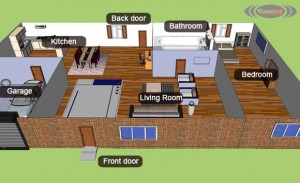 Click Here to enlarge picture Click Here to enlarge picture |
1All security systems have at least one keypad located near a commonly used entrance to a home or business. This allows the occupants to arm the security system when they leave the premise or disarm the security system when they enter. Viamtek keypads are available in different sizes and with different features. There are wired keypads as well as wireless, depending on the needs of the environment. |
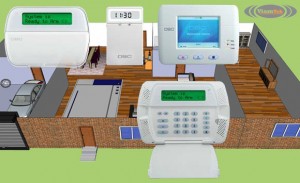 Click Here to enlarge picture Click Here to enlarge picture |
2Security systems can be armed and disarmed with the use of wireless keys. These allow a user to arm or disarm the security system with the press of a single button. Some Viamtek systems can also utilize what we call a “4-button wall plate”. Similar to a wireless key, a 4-button wall plate can arm or disarm a security system with the press of a single button, from various locations within the premises. the 4-button wall plate does not replace a keypad but is a convenient addition to a security system. |
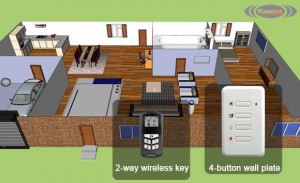 Click Here to enlarge picture |
1Perimeter Protection is the first line of defense against as intruder. Perimeter protection includes door and window sensors as well as shock sensors. |
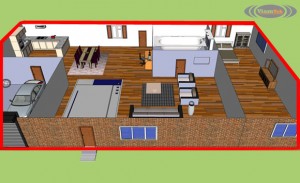 Click Here to enlarge picture |
2Door and window sensors are usually placed at any door or window that is easily accessible ground the ground level. Their purpose is to indicate to a security system when the door or window is opened or closed. |
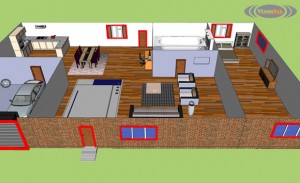 Click Here to enlarge picture |
3Door and window sensors are usually placed at any door or window that is easily accessible ground the ground level. Their purpose is to indicate to a security system when the door or window is opened or closed. |
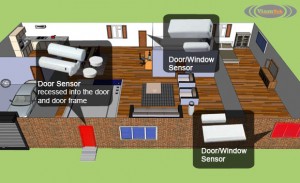 Click Here to enlarge picture |
4A security system can be programmed to go into alarm immediately when a door or window is opened or it can have a time delay to provide a user the opportunity to disarm the system. Time delays are most often used on a main access door where people normally enter or exit the premises. |
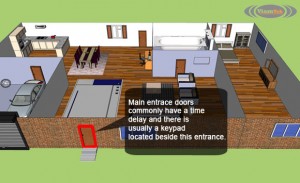 Click Here to enlarge picture |
5Door and window sensors can also be bypassed when a security system is armed. Bypassing a zone allows the security system to be armed while keeping the bypassed zone temporarily disarmed. For example, a bypassed window can be opened when a security system is armed.Bypass zones are automatically cleared when the security system is disarmed. |
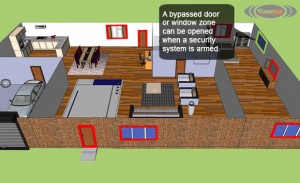 Click Here to enlarge picture |
1Interior protection is the second line of defense for a security system. Interior protection usually includes motion detectors and glass break detectors. |
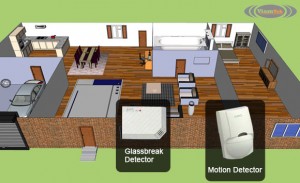 Click Here to enlarge picture |
2Motion detectors are used when no one is in the premises. The purpose of a motion detector is to indicate to a security system when a person is moving inside. Many motion detectors are “immune” to pets weighing up to 60 lbs (27kg). This allows a pet to freely move around a home without putting the security system into alarm mode while keeping it safe from human intruders. |
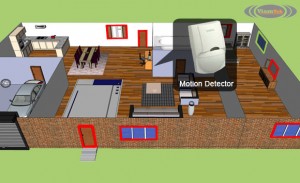 Click Here to enlarge picture |
3Glass break detectors indicate to a security system when a glass window is broken. This can help protect against an intruder who may try to enter a premise through a broken window. |
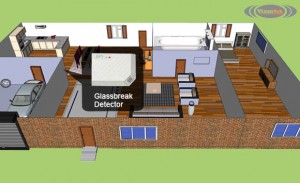 Click Here to enlarge picture |
1Life and property protection includes devices that detect smoke, carbon monoxide, low temperatures and flooding. |
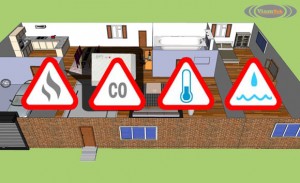 Click Here to enlarge picture |
2Smoke detectors and carbon monoxide detectors can be connected to a security system to alert the occupants of a home or business of danger. A monitoring station can also be notified about these dangers in a home or business. By connecting these devices to a monitored security system, emergency response can begin as soon as these devices detect imminent threat. |
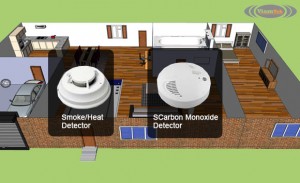 Click Here to enlarge picture |
3Low temperature sensors can be found in some devices such as keypads. During winter months, low temperature sensors can help alert a security system to a dangerously cold situation before a home or office has the chance to freeze. This can cause pipes to crack or break. It is a great feature when occupants are away from the premises for an extended period of time. |
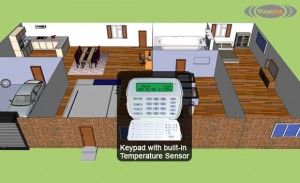 Click Here to enlarge picture |
4Flood detectors are a great way to alert a home or business owner of a high water situation. These sensors can help reduce the impact of a basement flood. One example would be to use a flood sensor near a sump pump. If the sump pump fails and water levels increase beyond a safe level, the security system can alert the occupants and the monitoring station. |
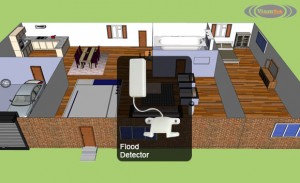 Click Here to enlarge picture |
1To allow a security system to be truly effective, it should be connected to a monitoring station. Monitoring stations respond to emergency situations when a security system goes into alarm. A monitoring station will contact the home or business owner immediately by phone to verify the alarm and depending on the response, will the contact emergency responders. |
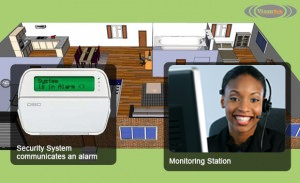 Click Here to enlarge picture |
2A security system can communicate to a monitoring station through a telephone line, an internet connection or by GSM (similar to cell phone technology). Telephone and internet communications are usually the most common form of communication with a monitoring station. GSM communication is often used as back-up (in the event of telephone or internet failure) communication method. |
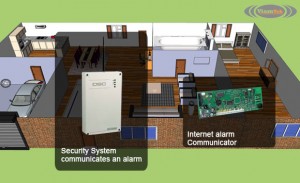 Click Here to enlarge picture |
A security system will provide you with peace of mind by protecting what you value most, your family and your home or business.
Thank you very much for taking the time to better understand its numerous capabilities
